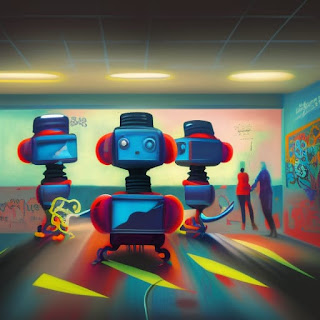Going Beyond AI Detectors
Unleashing the Creative Potential: Rethinking Education Beyond AI Detectors
Introduction
As we navigate the ever-evolving landscape of education in the age of AI, it is crucial to reflect on the limitations and possibilities that emerge. In this thought-provoking journey, as an educator who has closely witnessed my colleagues' struggles with AI detection systems, invite you to explore a unique perspective on rethinking education. Prepare to dive into a world where the boundaries of learning are expanded, and students are empowered to unleash their creative potential.
The Provocative Reality of AI Detectors
In our pursuit of harnessing AI to support education, we encounter a paradoxical challenge. AI detection systems, designed to identify AI-generated content, often leave educators grappling with the frustrations of false positives and false negatives. Why does this inconsistency persist? The answer lies in the rapid development of AI models, sprinting far ahead of the training data on which the detectors rely. Such a situation compels us to question the very purpose of education and seek alternative approaches that foster growth and innovation.
Unveiling the Hidden Benefits of AI as a Learning Tool
While AI detectors may stumble in their identification quest, we must not overlook the tremendous benefits of integrating AI as a learning tool. Enter PhotoMath, a game-changer in the realm of mathematics education. This widely adopted AI tool has been a trusted companion, assisting students in comprehending complex math problems and unlocking new concepts with ease. It acts as a catalyst for understanding and problem-solving, accelerating the learning process and igniting curiosity.
Amidst the marvels of AI, we must remember that true learning transcends reliance on automated solutions. Students, driven by their innate desire for growth, are unlikely to tether themselves solely to AI tools like PhotoMath. They recognize the significance of independent thinking, problem-solving, and the art of articulating their knowledge. Assessments, quizzes, and tests become arenas where they can showcase their mastery of subject matter, solidify their understanding, and celebrate their intellectual victories.
Nurturing Transparency and Shared Learning
Instead of viewing AI detectors as the panacea for academic integrity, let us foster an environment that values transparency and shared learning. Imagine a classroom where students are encouraged to be open about their learning journey, sharing insights, strategies, and lessons learned. AI, when embraced as a learning aid across various subjects, becomes a catalyst for collaboration, sparking discussions, and unveiling new perspectives. The walls of knowledge dissolve, and students become architects of their own educational landscapes.
Embracing the Transformative Power of AI
In this transformative era, we must acknowledge that AI detectors have limitations. Training data quickly becomes outdated as AI models surge ahead, leaving the detectors struggling to catch up. However, by reimagining the role of AI in education, we can unveil a more holistic approach to teaching and learning. Let us leverage AI as a powerful ally, harmonizing it with the principles of transparency, independence, and the demonstration of knowledge. Through this synergy, we can create a vibrant educational ecosystem where students flourish and reach new heights.
Conclusion
As we bid farewell to traditional educational paradigms and embrace the vast possibilities of AI, let us not lose sight of what makes us human: creativity, critical thinking, and the relentless pursuit of knowledge. By transcending the limitations of AI detectors and nurturing a culture of transparency and shared learning, we can empower students to unleash their unique brilliance. Together, let us embark on this transformative journey, forging a future where education transcends boundaries and sparks the extraordinary.




Comments
Post a Comment